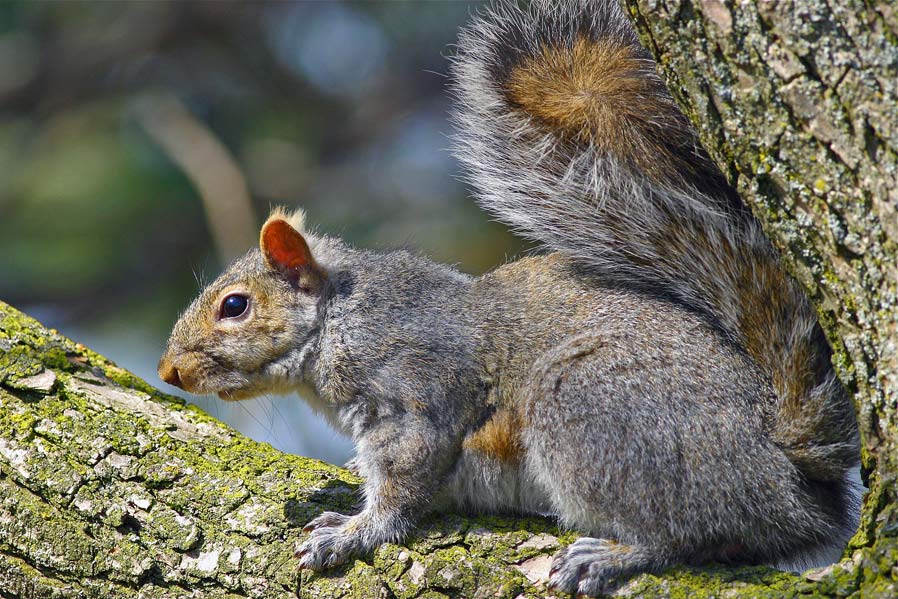Eye to eye with a grey squirrel (Sciurus carolinensis), in Ashbridge’s Bay Park, April 1, 2010. © BCP 2010
I was having my wake-up coffee yesterday and reading my morning paper — the Science section in Tuesday’s New York Times (the July 5th edition — it gets delivered a day late via The Globe and Mail. Long story) — when I began to read an article that goes to the heart of what this website hopes to be — an exploration of where the natural world smacks up hard against the urban environment.
It was an article written by one of my favourite Times‘ columnists, Natalie Angier, concerning the phenomenal urban success of the Eastern grey squirrel, Sciurus carolinensis. Grey squirrels are prolific and adaptable. And depending on your point of view, either utterly adorably fascinating, or damnably annoyingly rodenty. In my family, there are more of us who see grey squirrels as charming, hilarious circus performers. But the one member of my happy gang here in the Beach who sees a grey squirrel and starts to think Uzi? Just so happens that person wears the biggest boots in our clan.
Don’t be confused about by the name, by the way. That pair of black squirrels that you see racing around the tree in your yard, chasing each other in crazy, unending loop-de-loops? They’re grey squirrels. Aren’t they just so cute?
Here’s part of what Ms. Angier of the Times had to say about these surprisingly intelligent mammals this week.
“The Eastern gray tree squirrel, or Sciurus carolinensis, has been so spectacularly successful that it is often considered a pest. The International Union for Conservation of Nature includes the squirrel on its list of the top 100 invasive species. The British and Italians hate gray squirrels for outcompeting their beloved native red squirrels. Manhattanites hate gray squirrels for reminding them of pigeons, and that goes for the black, brown and latte squirrel morphs, too.
Yet researchers who study gray squirrels argue that their subject is far more compelling than most people realize, and that behind the squirrel’s success lies a phenomenal elasticity of body, brain and behavior. Squirrels can leap a span 10 times the length of their body, roughly double what the best human long jumper can manage. They can rotate their ankles 180 degrees, and so keep a grip while climbing no matter which way they’re facing. Squirrels can learn by watching others — cross-phyletically, if need be. In their book “Squirrels: The Animal Answer Guide,” Richard W. Thorington Jr. and Katie Ferrell of theSmithsonian Institution described the safe-pedestrian approach of a gray squirrel eager to traverse a busy avenue near the White House. The squirrel waited on the grass near a crosswalk until people began to cross the street, said the authors, “and then it crossed the street behind them.”
You can read the whole article in the Times online, here.
In the meantime, I’m going out back to watch the squirrels.
© BCP 2010




1 comment